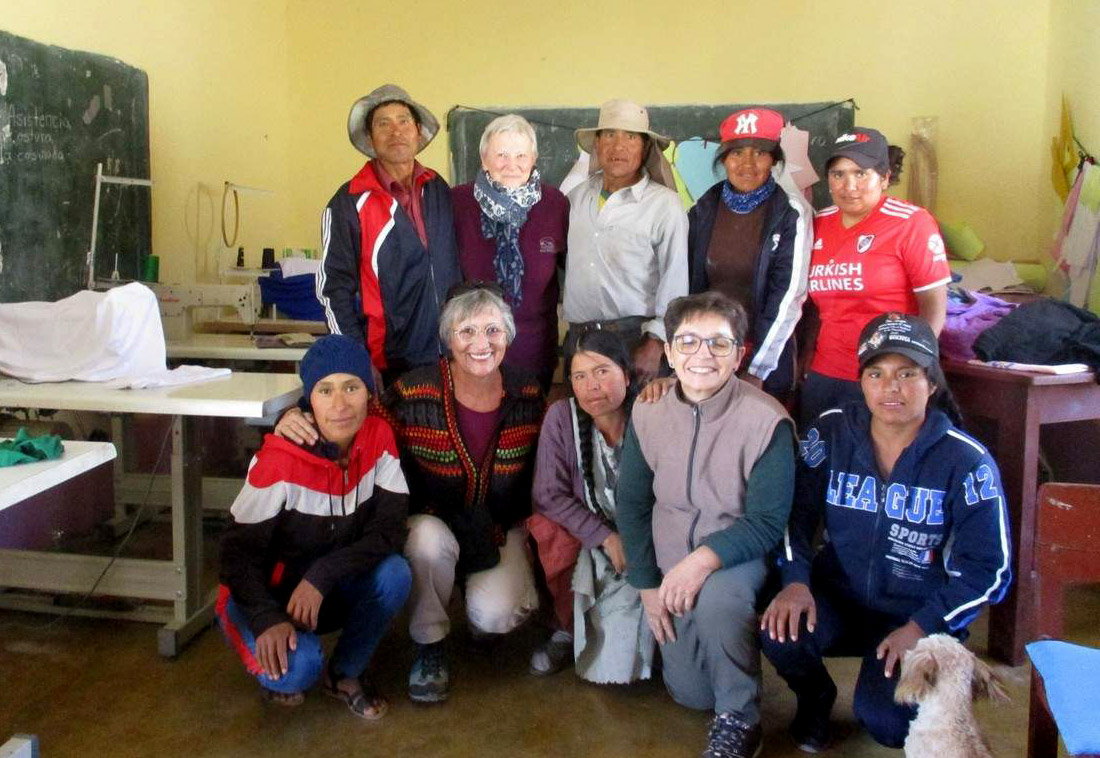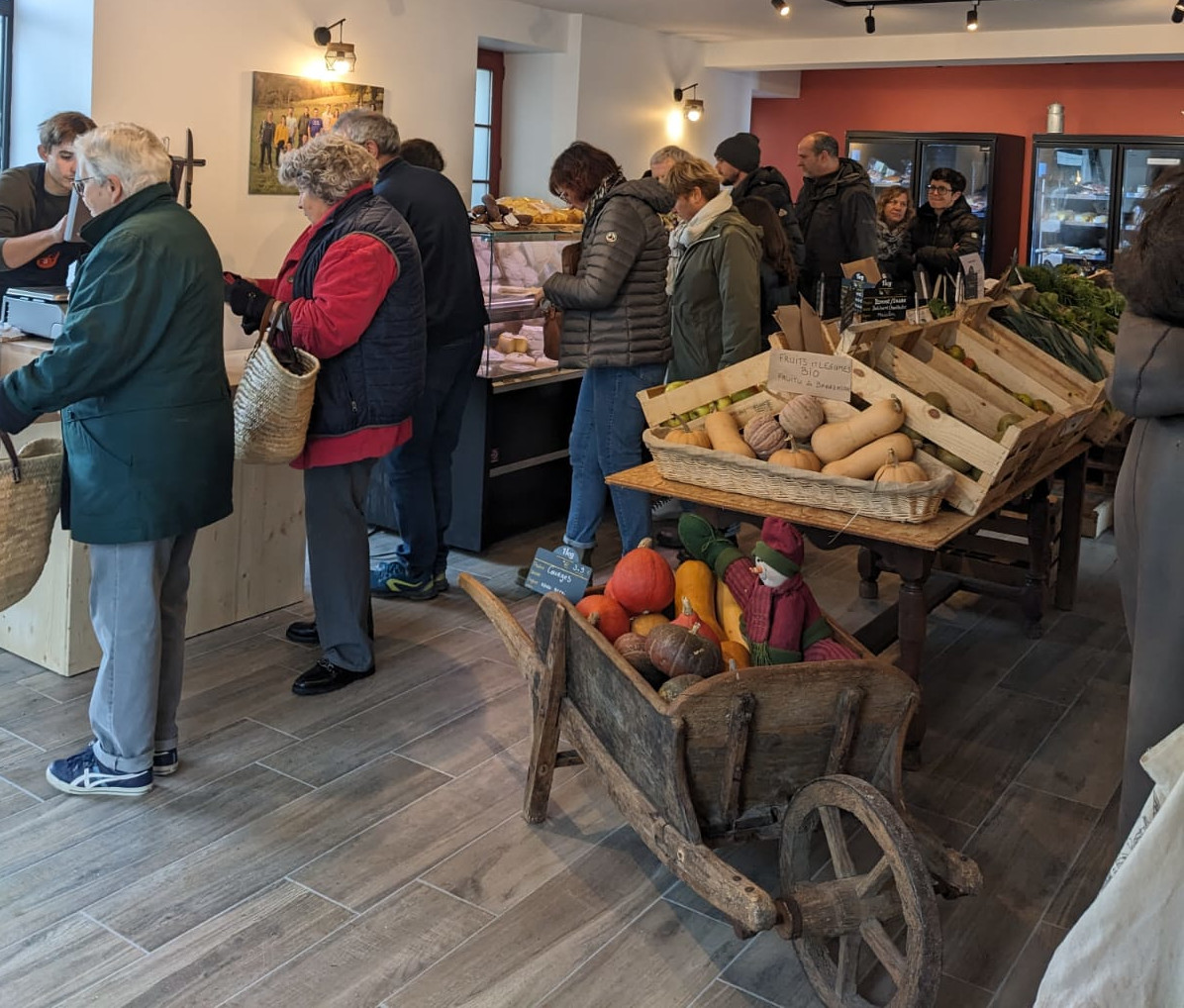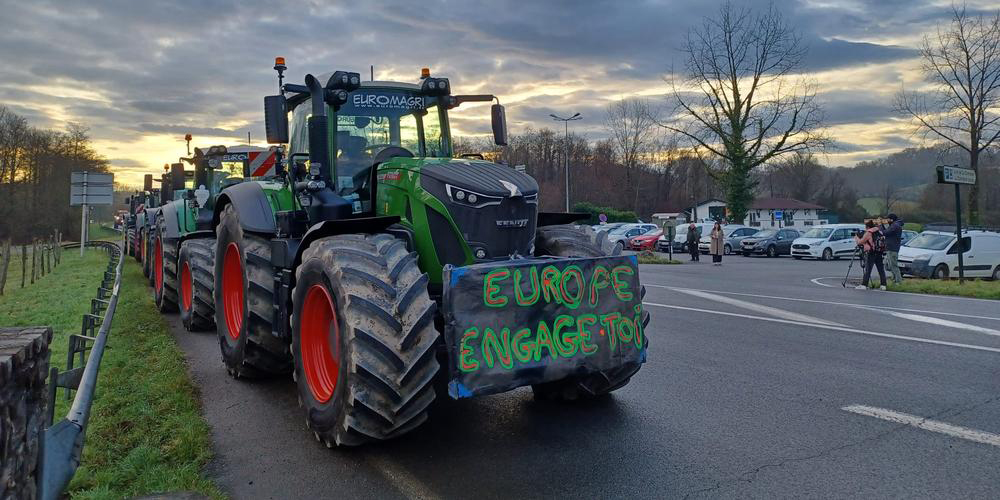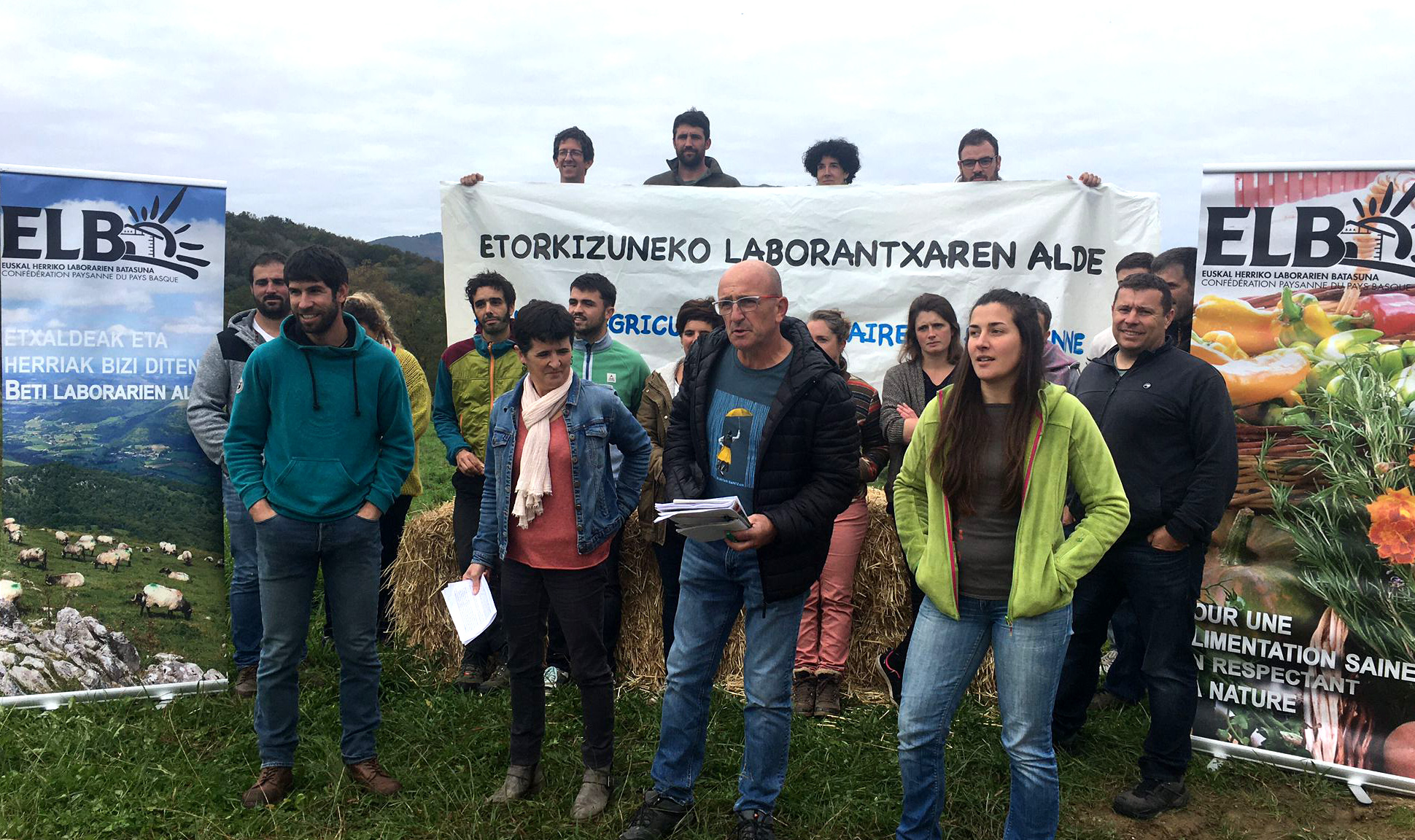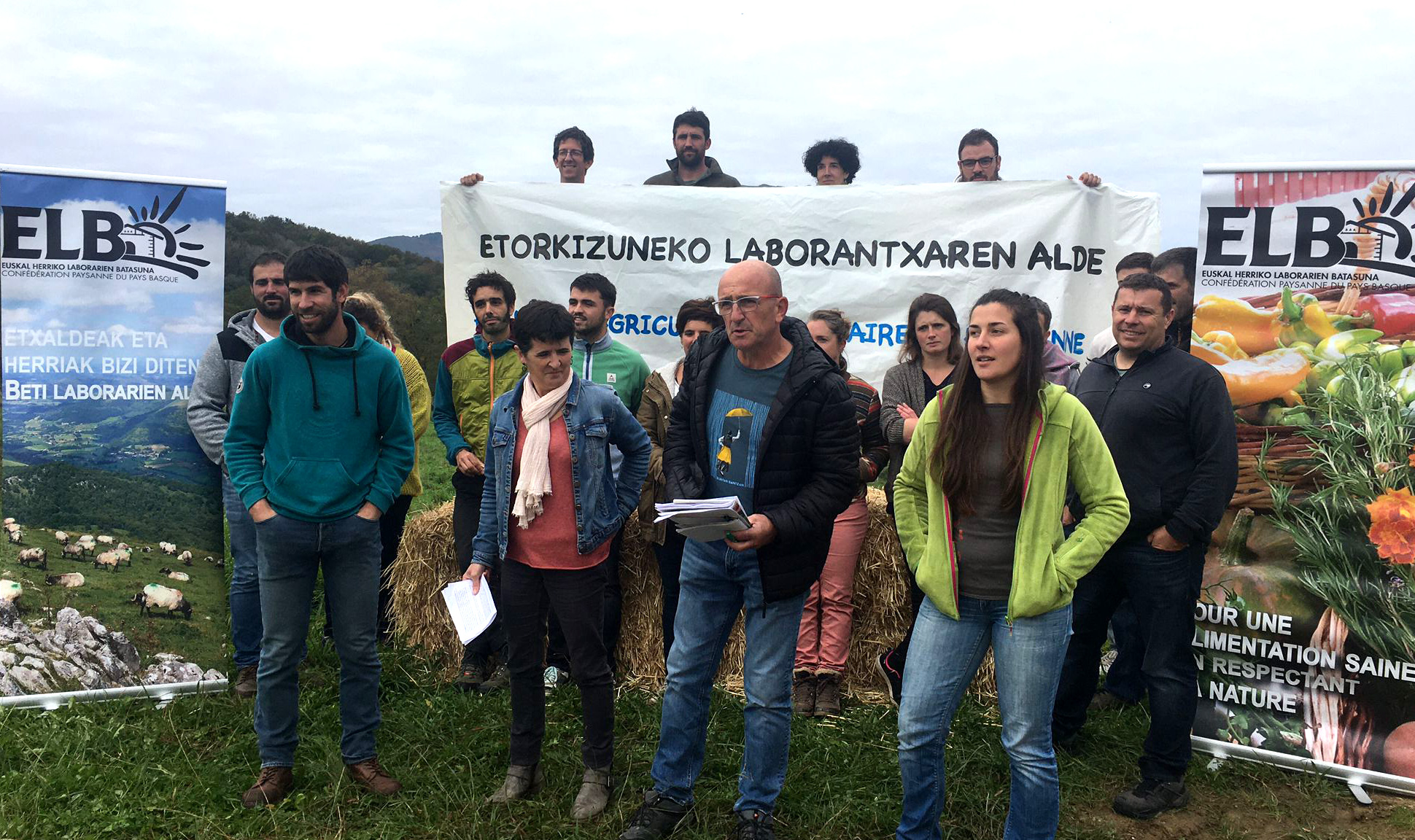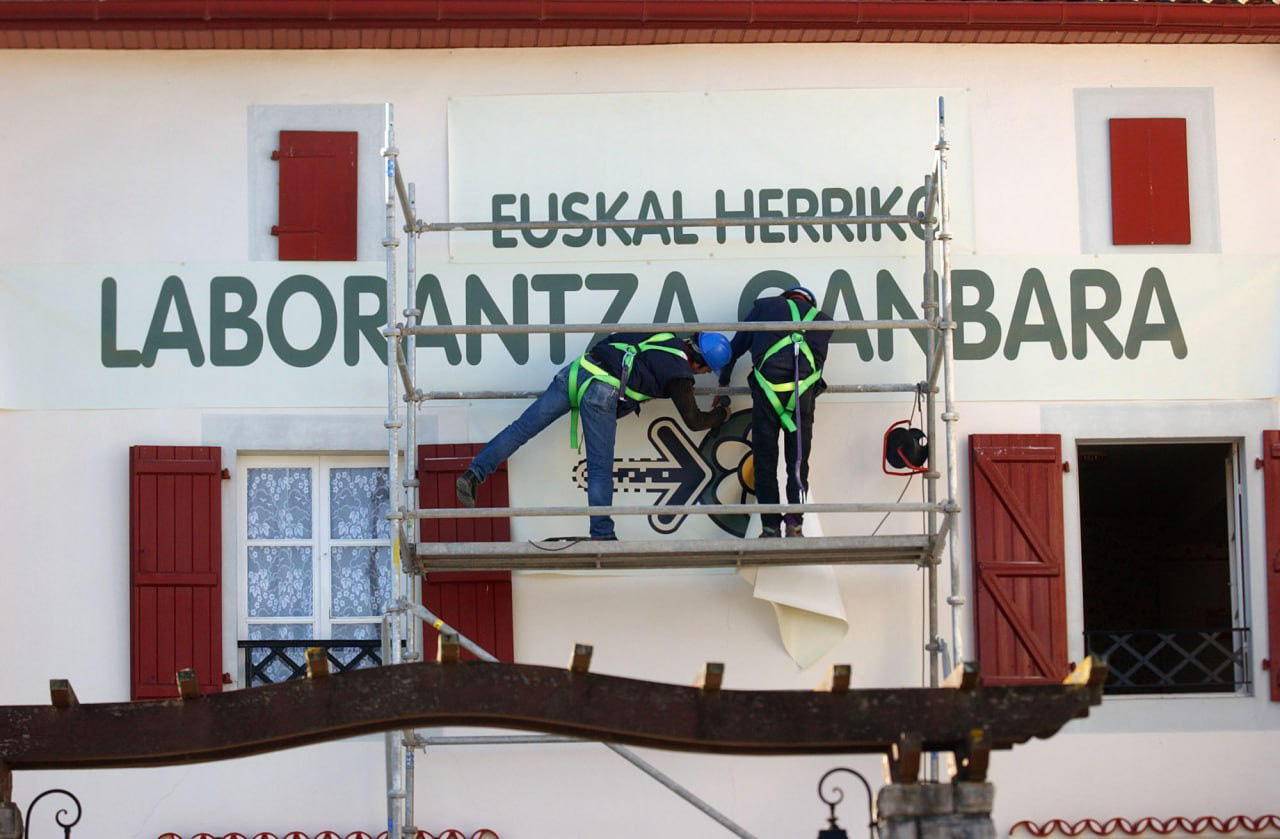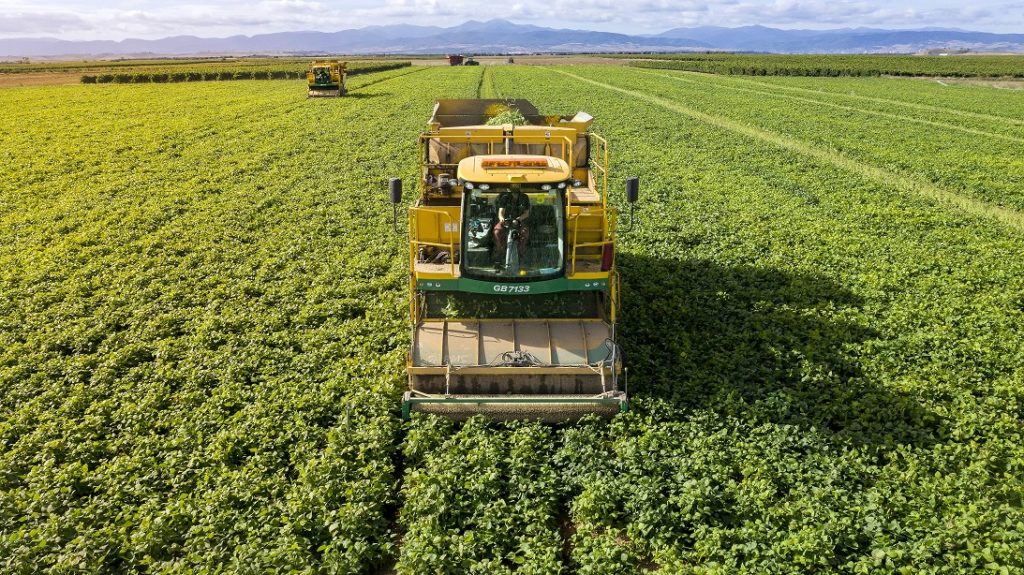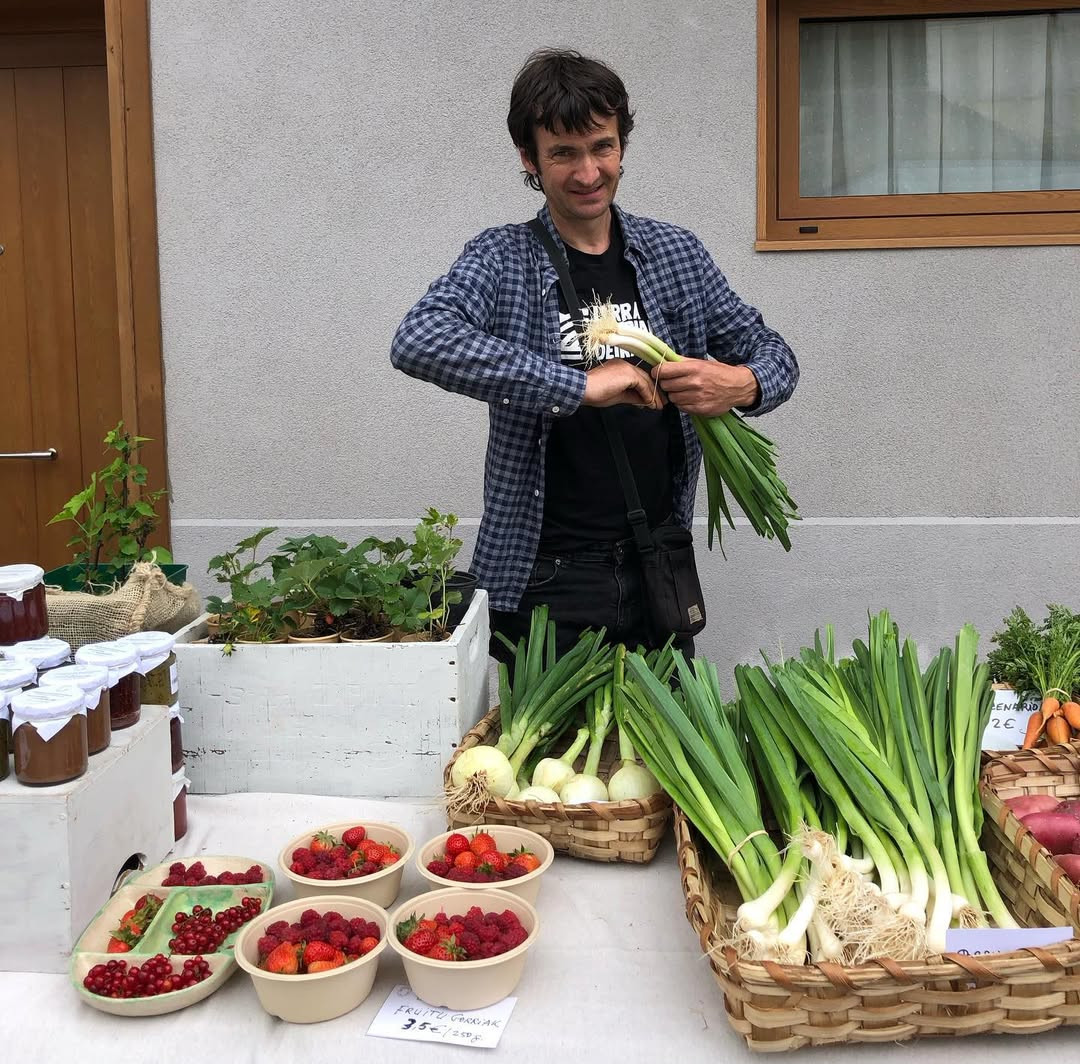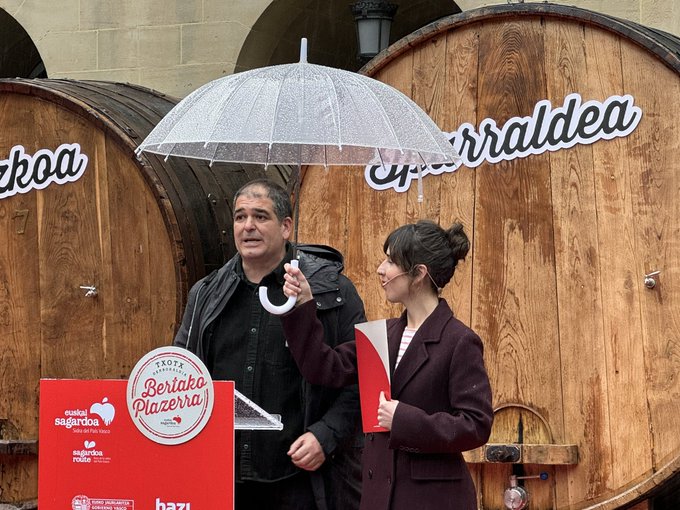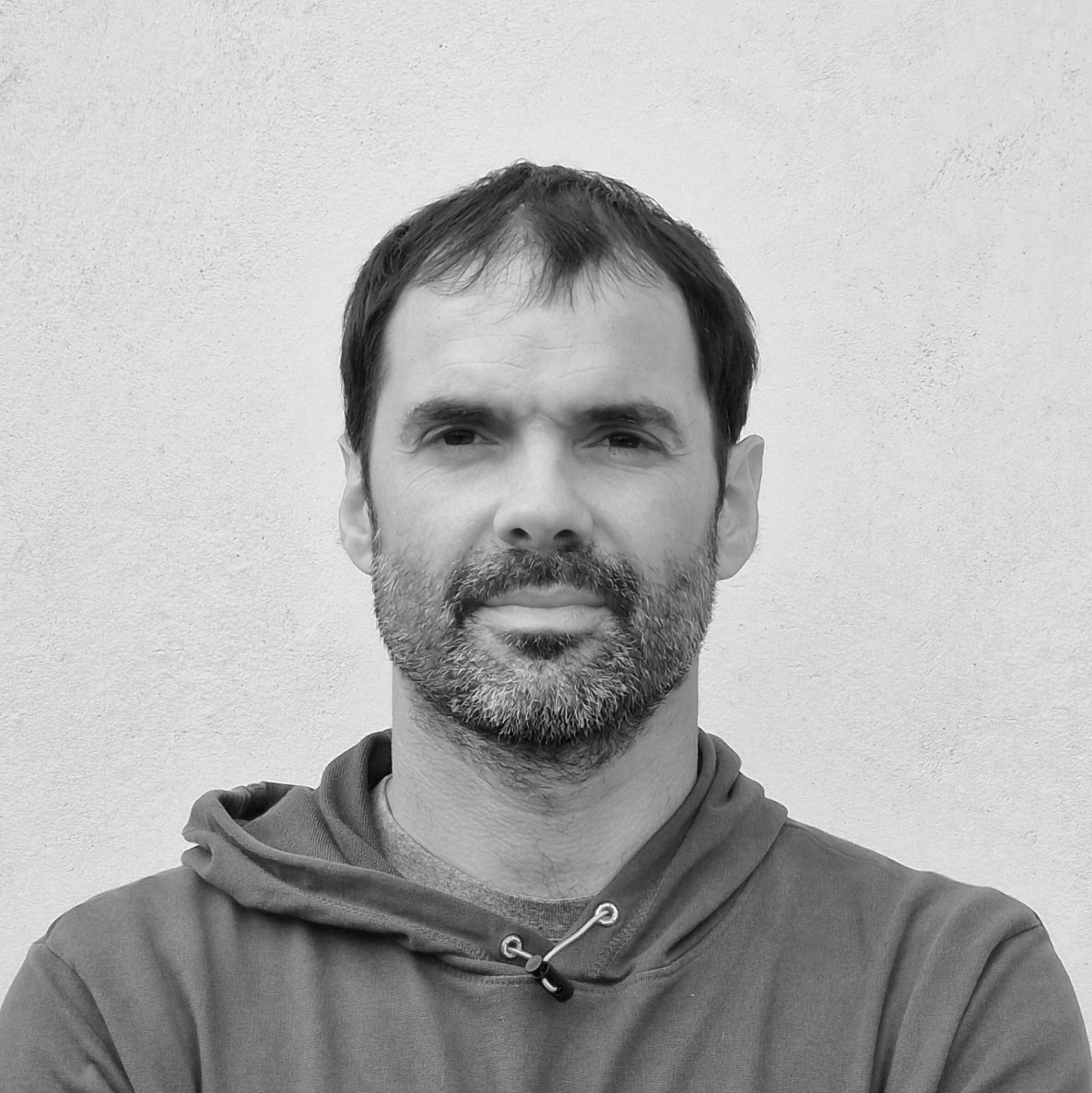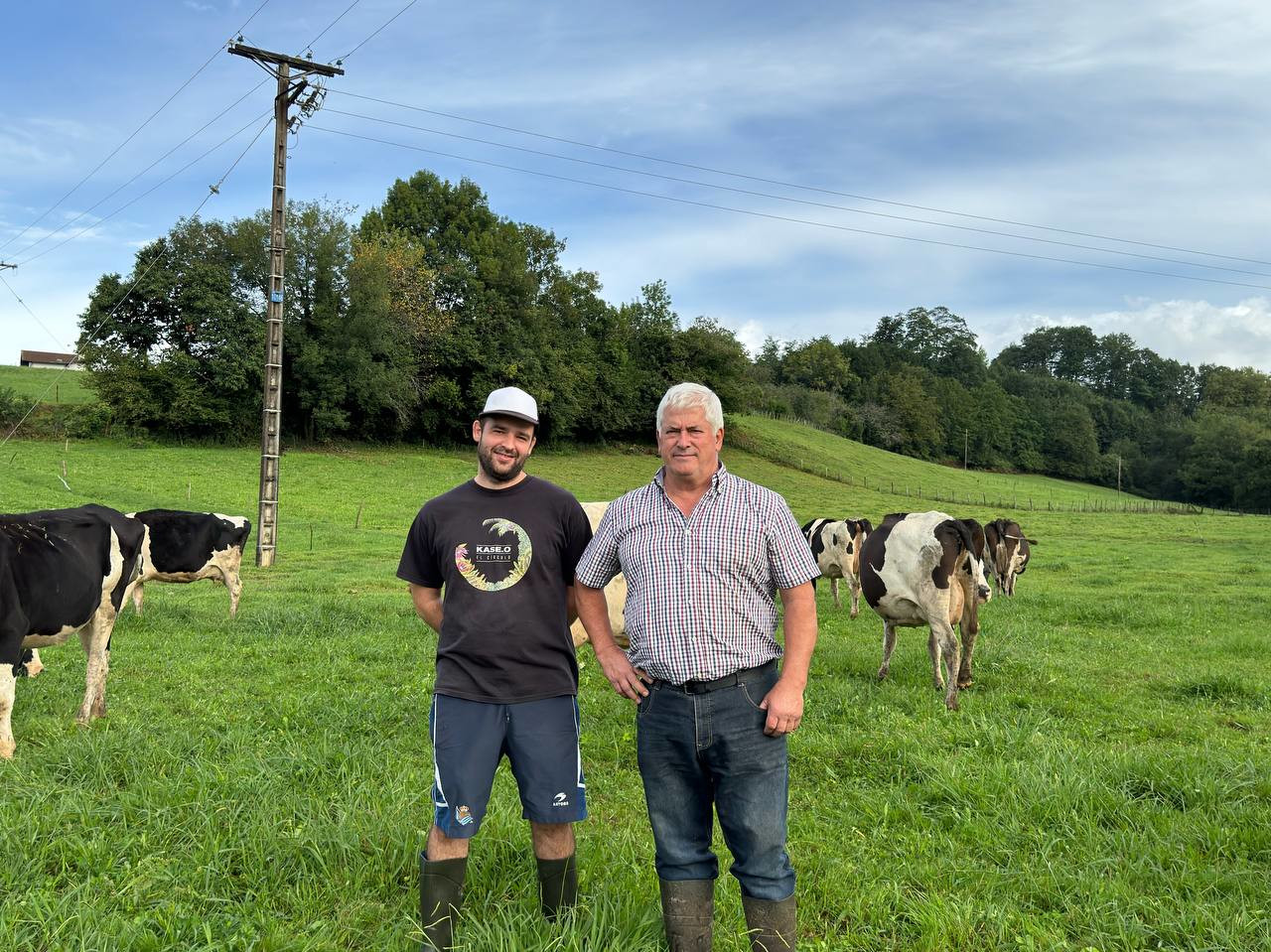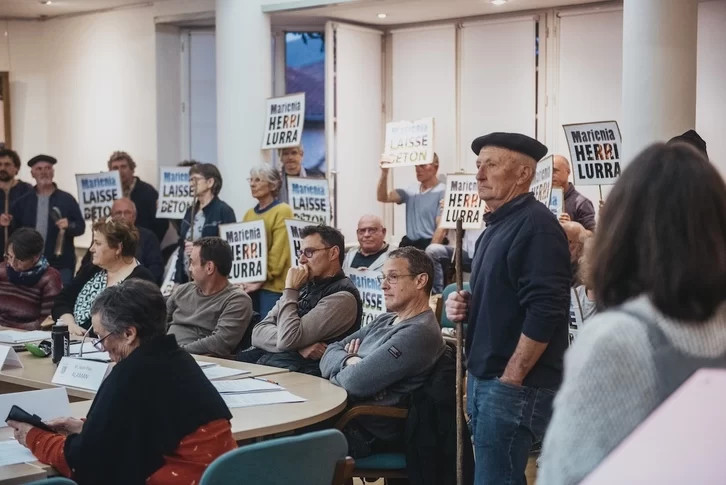The industrial sector has left the agreed CAP satisfied and concerned.
- After hard discussions, the Common European Agricultural Policy for the years 2023-2027 has been agreed on 25 June between the European Parliament, the Council of Agriculture Ministers and the European Commission. Many hoped that climate would be an instrument for dealing with or at least limiting the emergency, but in the end it will not be. The European Union will continue with the same logic as it has done so far, mainly supporting industrial agriculture, and, as it has done so far, leaving behind the popular cultivation that is committed to the environment and to the peasants, with little support.
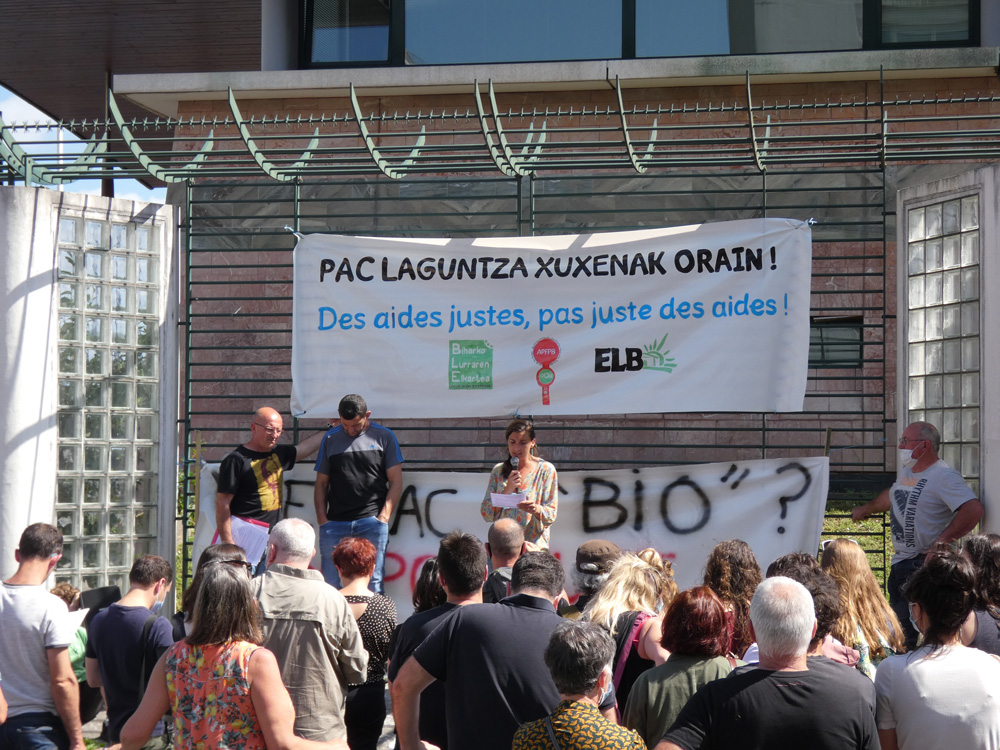
“We have been given a premature text since three years of debate, with the same skin and with the same essence of the Common Agricultural Policy (CAP) as before. From the crisis COVID-19 supplements and from the agricultural dependencies that has exposed us, the 27 states have not learned lessons. What cracks it feeds between the Green Deal and the CAP tomorrow! Parliament, the only body elected by the citizens, has had little weight in the decision”, can be read in the document published by Confédération Paysanne, a union that is committed to popular cultivation. It concerns the reform that marks the guidelines, objectives and paths of the CAP for the years 2023-2027, adopted by the Council of European Agriculture Ministers, the European Parliament and the European Commission on 25 June.
The agreement was not won beforehand, because there were discrepancies between Parliament and the Council of Ministers. One – the European Parliament – intended to complete the reform with greater respect for the environment and with the aim of limiting the climate emergency, and the other – the Council of Agriculture Ministers – did not show enough enthusiasm and courage to cut it off with the existing industrial logic.
It is easy to stain the words in green, in theory everyone agrees that the climate emergency must be limited and progress made in an environmentally friendly political project on the part of the European Union. But when we have to go beyond words, that is, when it comes to making political decisions to meet the objective, the contraction is in fact because the objective requires courageous measures and changes. As regards the reform of the CAP, the soka-strip was in that sense: either they drew up a more ecological cultivation project than they have been – socially more direct – or they continued with a common policy that mainly supports industrial agriculture.
The reform of the CAP was agreed in October last year by the 27 European agriculture ministers, with a budget of EUR 336 billion for seven years, but the objectives and measures were not agreed with the European Parliament. So much so, despite the fact that on 28 May the negotiations were closed, forcing the unbeatable points: “We have many fundamental issues to resolve, we have decided to postpone the talks.” The 27 states hold the Green Deal or Green Pact presented in 2019, in which they commit to achieving carbon neutrality by 2050. So that the Green Deal does not become greenwashing, yes or no, in the CAP, as 12% of the EU’s greenhouse gas emissions come from cultivation. A month later they meet again in order to reach an agreement.
Environmental MEP Benoit Biteau welcomes the agreement as follows: “An unjust, climatic and dangerous reform for biodiversity.” In fact, the text does not require a change in the cultivation model, it continues to support mainly the industrial system. A common agricultural policy was launched in 1957, promoting a productive model as a response to the challenges of the time, and with the reform they have not changed course, but have only stimulated and strengthened intensive logic.
75% of the budget for the years 2021-2027 – EUR 258 billion – is distributed directly to farmers and there have been no drastic changes in the distribution criteria. As in the past, subsidies will be distributed according to the amount of land or livestock: the greater the amount, the more subsidies they will receive from Europe.
Here, point by point, the details of the policy agreed up to 2027:
Following the same logic: depending on the size
“The principle of aid per hectare must be called into question (within the framework of the CAP, the greater the number of hectares a farm receives),” says Aurélie Catallo, a member of the Alde platform of a different CAP. In the name of what greatness would justify further payments? Knowing that research shows us that the bigger the farm, the more harmful it is to the environment and the less employment it generates per hectare.” The fact is that, following the agreed text, the European Union has not cut it with this link gica.Sin but there are some novelties that seek to support another model, but they
do not predominate.
Novelty: Eco-schemes
The premiums distributed to environmentally friendly farmers are the main novelty of this reform. In this respect, they have had the hottest debates, which could not agree on the proportion to be allocated to eco-schemes in direct aid. The MEPs demanded a minimum substitution of 30%, while the states demanded a limit of 25% with a transitional period of two years, in which they would not be obliged to respect this proportion. The measure has been set according to the will of the States: 25% of the budget will be allocated to eco-schemes, if there is no demand, 20% in the years 2023 and 2024.
But as important as it is oriented is to see what it's going to ... The concern expressed by organic growers is due to the fact that according to the text they are projects of “high environmental value”. They will be distributed according to flexible criteria that can be collected by those who are not organic production, once again leaving the person with less support. For example, the French Minister of Agriculture announced that between 80% and 85% of farmers in the French State could have access to eco-schemes. Those who are in a popular and sustainable model are not so many in France -- so it is clear that they could also be distributed to those who do so in an intensive model.
Rural rotations
If we look closely at the debate, we are aware that the measures that bet on the environment are the ones that most resist. These include the rural rotations required by reform or the obligation to leave certain rural areas uncultivated in order to promote biodiversity. They must retain between 4% and 7% of uncultivated farmland (except for husbandry of less than 10 hectares).
In the second column, 35% for the environment
The CAP is divided into two: on the one hand, the "first column" subsidies to farmers and, on the other, the "second column", which is committed to the development of the rural environment. For this second, 25% of the budget is allocated, and the agreed text states that 35% of this amount must be allocated to environmental projects.
nuance: instead of “routing”, “looking”
The CAP should be an important instrument in order to be able to implement the Green Deal or the Green Pact. Among them, because some of the objectives listed in the pact relate to the sector: reducing pesticides and antibiotics by 50% by 2030 and seasonings by 20%, as well as allocating 25% of farmland to the biological model. The fact is that they have not completed the reform with the determination to overcome these challenges. The European Union should “monitor” the adequacy of Member States’ agricultural policies to these objectives, without “compelling” anything.
“The weakness of the environmental regulatory framework and standards and the lack of quantitative environmental targets mean that three-quarters of the direct subsidies are allocated to the intensive model without asking for any kind of ecological conditioning”, disregards the European Environment Office. In other words, the reform means continuing the trend so far: “This agreement maintains the status quo situation, means continuing the shipwreck aid geared to the industrial model. They will not deceive us, we realize greenwashing,” says Greenpeace.
The criteria for allocating subsidies are not the opposite; a ‘green’ CAP will not be created. Because the expression “green industrial cultivation” is an oxymoron... In addition to the environment, however, the future of the sector is also at stake, because farmers and farms are disappearing alarming: 4.2 million Ttipi farms have disappeared in Europe for ten years, namely 25% of the farmhouses. Once again, this reform has not taken this problem seriously, because it is based on the largest.
weakening unity, more and more decisions to States
For better or worse, the 27 states are becoming more decisive and common policies for agriculture are becoming less and less Community. Despite the fact that the general objectives have been agreed at European level, the European Commission is increasingly leaving it to the Member States to decide on ways to implement them. For example, the criteria for eco-schemes will be set by States. It remains to be seen, then, how the CAP will now be directed by state.
NPBaren erreforma honi buruzko ELBren irakurketa zein da?
Adostasun honekin koadroa markatu dute eta orain estatuei dagokie norabidea zehaztea. Maleruski, finkatu koadroak ez du orain artekoa biziki aldatuko. Egundaino erran duguna da ez dela bidezko diru banaketarik: bakar batzuengana doa dirulaguntzen alimaleko zama. Frantzian adibidez laguntzen %80a laborarien %20ak du errezibitzen. Ongi izanen zen Europak koadro justuago bat eman balu, dirulaguntzak hobeki banatuz, baina ez da halakorik gertatu. NPBak hiru ardatzetan beharko zuen hobetu: sozialki, laborantza biziarazten eta laborantzaz bizi direnak gehiago eta hobeki kontutan hartu; ekonomikoki, bestelako eredu bat garatu; eta bistan da, ingurumenari dagokionez ekologikoagoa bihurtu. Hiru ardatz horietan ez da aldaketarik sendi, kasik erran daiteke orain artekoaren jarraipena dela.
Bakar horiek handienak izanki.
Zenbat eta lur eta kabala gehiago ukan, orduan eta laguntza gehiago duzu. Hori horrela, NPB “berdeagorik” ez da posible. Laguntzak beste gisaz banatuak balira, anitz gauza egiten ahal lirateke! Europan, laborantza saila biziki sostengatua da, baina maleruski arrunt gaizki lagundua da. Horregatik ditugu gaur bizi ditugun kalte guztiak. Baina ez dezagun gorde: hau nahikeria politiko bat da.
Lobbyak ere hor direlako.
Bistan da. NPBaren lehen irabazlea agroindustria dela onarturik dute aspaldian begirale anitzek.
Orduan orain estatuka jokatuko da afera.
Laborantza Ministerioan presioa eginen dugu, lehenik eta behin etxalde ttipientzat laguntza hobeak lortzeko. “Ingurumenarentzat balio handiko” ziurtagiria ere hor da. Izen biziki ederra du, hori bai, baina maleruski edozer gauza sar dezakete barnean. Izuarazten gaitu, biziki kaltegarria izan daitekeelako eredu biologikoan dabiltzan laborarientzat, baina orokorkiago ingurumenarentzat eta jendarte osoarentzat.
Zubiak eraiki Xiberoa eta Boliviaren artean. Badu jadanik 16 urte Boliviaren aldeko elkartea sortu zela Xiberoan. Azken urteetan, La Paz hiriko El Alto auzoko eskola bat, emazteen etxe baten sortzea, dendarien dinamikak edota tokiko irrati bat sustengatu dituzte.
Datorren astean Departamenduko Laborantza Ganbarako hauteskundeak ospatuko dira Ipar Euskal Herrian. Frantzia mailako FDSEA eta CR sindikatuez gain, ELB Euskal Herriko Laborarien Batasuna aurkezten da, "euskal laborarien defentsa" bermatzeko.
Euskal Herriko Laborantza Ganbera elkartearen hogei urteak ospatu zituzten asteburuan Ainhize-Monjolosen. 2005eko urtarrilaren 15 hartan sortu zuten Lapurdi, Baxenabarre eta Zuberoako laborantzaren garapena –hori bai, iraunkorra eta herrikoia izan nahi duena–... [+]
Departamenduko Laborantza Ganbarako hauteskundeen kanpaina abiatu da. Urtarrilaren 14an bozetara aurkezten diren hiru sindikatuen ordezkariekin bi oreneko eztabaida sakona antolatu zuten Euskal Hedabideek, osoki euskaraz.











